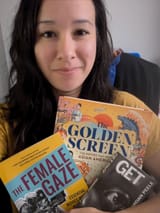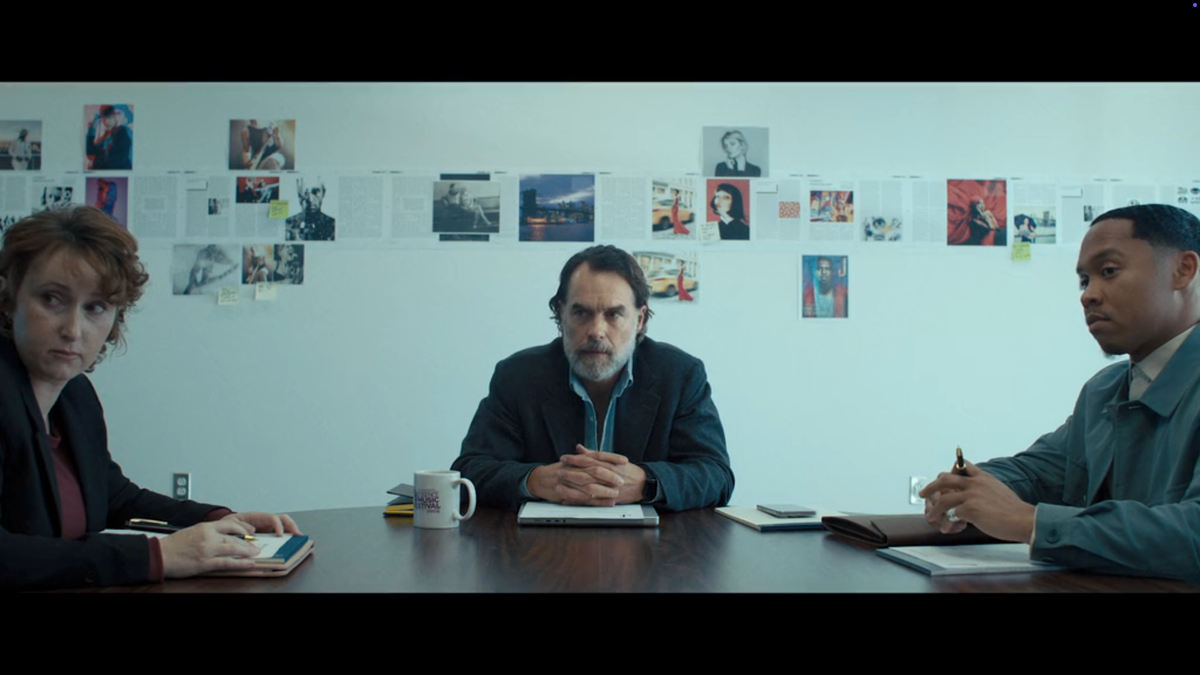
3 Shots and Film Frame Analysis Practice in Opus
Analyzing 3 shots and other film analysis practice moments in Opus.
In the first few scenes of Opus, I noticed a pattern of 3 shots.
Film Vocab Sidebar 1 shot, 2 shot, 3 shot
I know the terms "1 shot" and "2 shot" are recognizable terms with regards to film vocabulary.
1 shot = 1 person in the shot.
2 shot = 2 people in the shot.
So it only feels natural to reference a shot with 3 people in it, as a 3 shot, which is why I'm doing so here. But in truth, I do not know if this would be a term "in a film dictionary" or used by filmmakers.
3 Shot of Ariel in the Opening Sequence
In the opening sequence, I initially barely noticed the two men flanking Ariel (Ayo Edibiri) as she pitches her story, and that makes sense, they're blurred out of focus in the background.
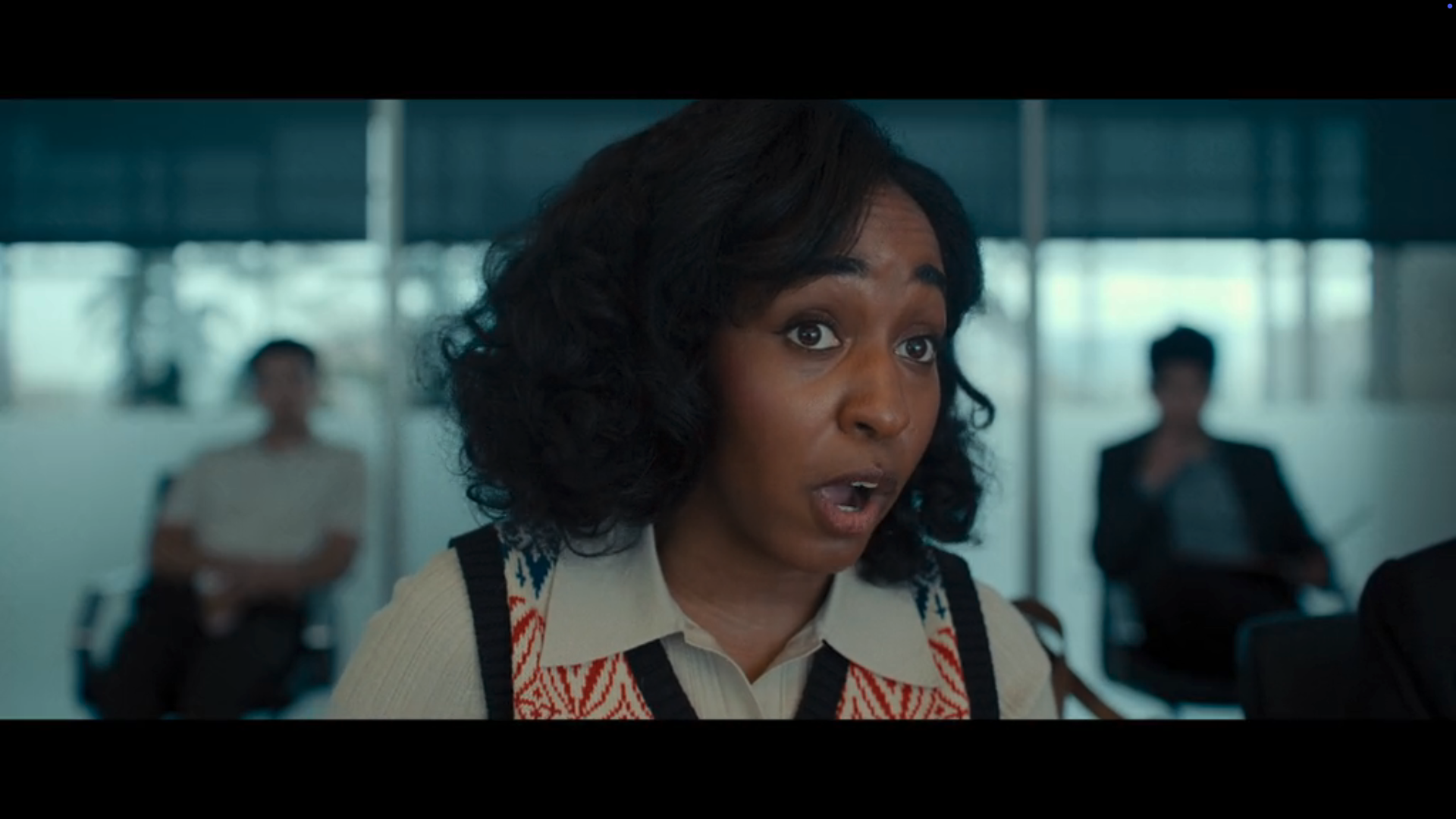
The sound of her voice, her warmth, and how close she is to the camera draws my attention to her.
It's only when the camera flips as we look to her boss's response, that I noticed the "3 shot" - her boss, Stan, staring right at us, with other staff members also on either side of him.
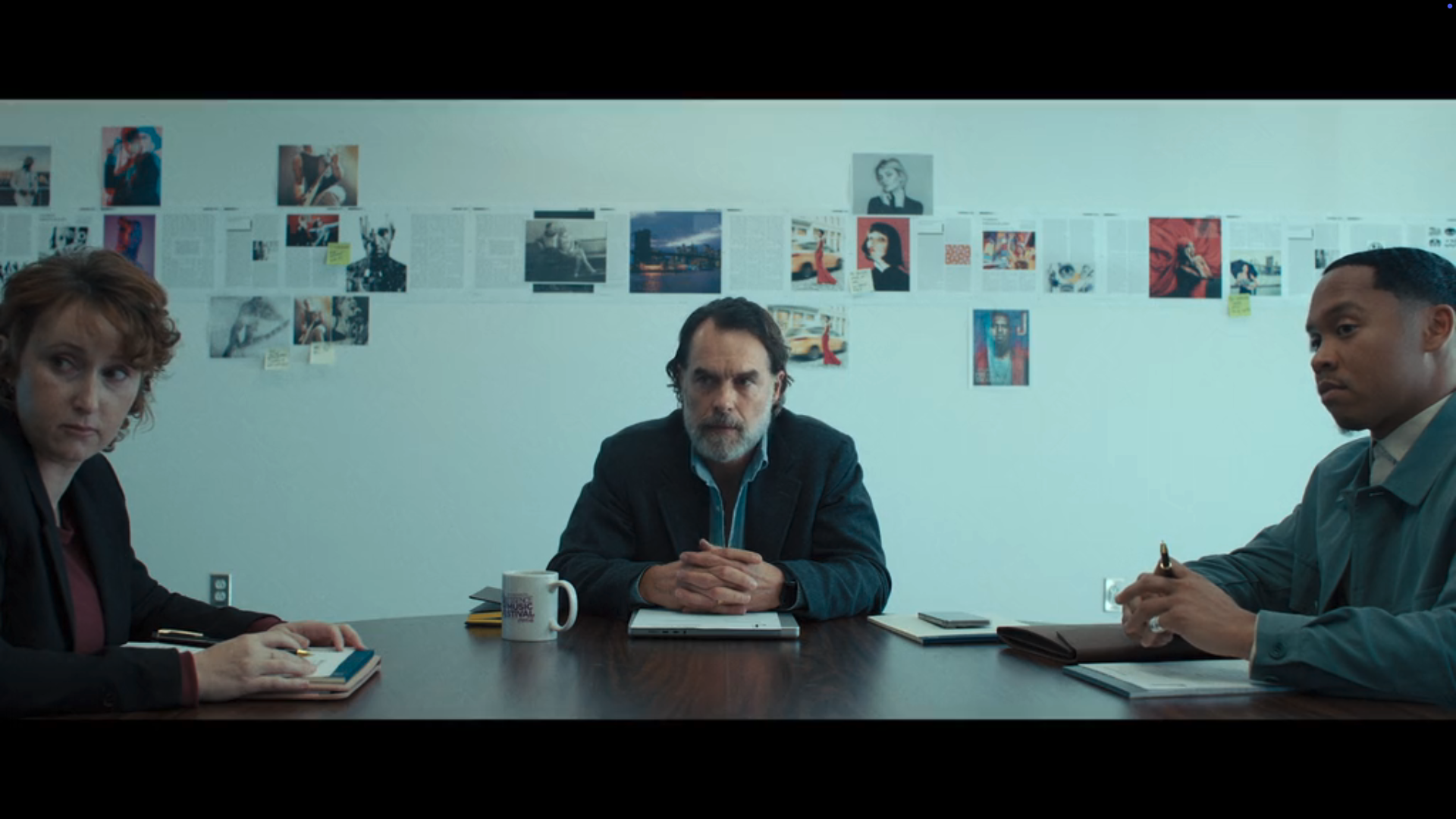
What's the point? What does offering us a setup of two characters facing off, with actors on either side of them (as support? as symbols?) suggest?
Is Ariel facing off with Stan?
What kind of "support" does she have?
Do those blurred out actors in the back look reminiscent of her boyfriend, Kent (Young Mazino)? Is one a devil and one an angel on her shoulder?
Narrative Perspective and POV in Framing
The framing of Stan is also jarring, because it suggests us, the audience, facing off with Stan instead of Ariel. Despite the fact that with regards to the plot and action of the scene, it's Ariel that would feel as though she's facing off with her boss, as she pitches a story that she wants to write, to him, for approval. But notice that Ariel is seated to Stan's right, on the right side of the conference room table:
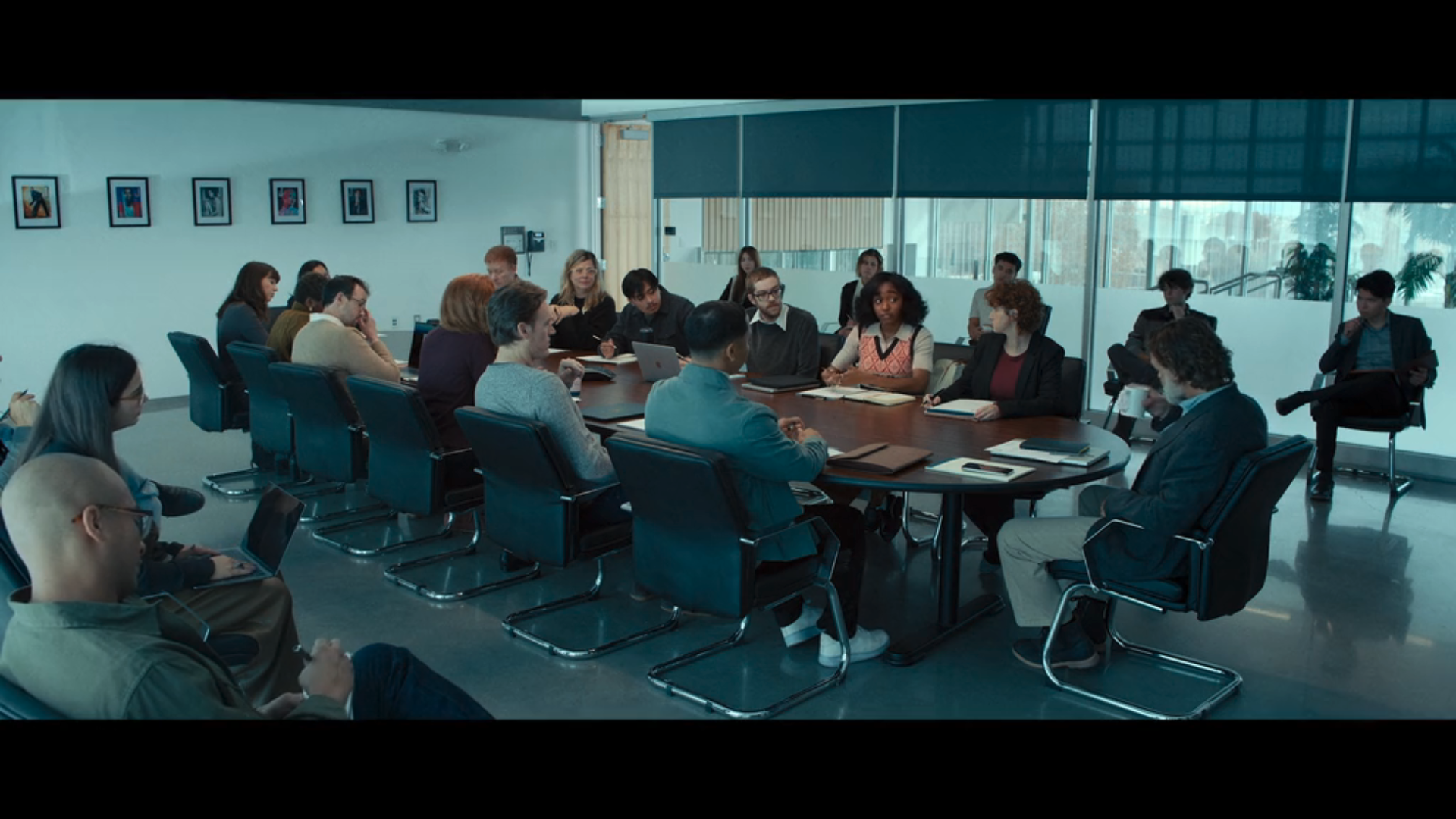
So if this were a shot-reverse-shot dialogue situation, one would expect the shots to frame Ariel as if from Stan's point of view, and Stan from Ariel's point of view - but if that were the case, the white woman in the blazer would be in between them. And we also would not be viewing them straight on.
Instead, Green has the camera placed right there on the table (so it seems), so we look straight on at Ariel, and straight on at Stan. This gives us, the audience, our own lens or perspective to look through, despite the fact that the close up of Ariel pitching her story initially brings us close to her nerves of the moment, so when we switch to the medium long shot of Stan, yet he's center frame, it feels as though we're in Ariel's shoes, made to feel small as we stare down her boss, despite the fact that we, the audience, are technically viewing from the middle of the table.
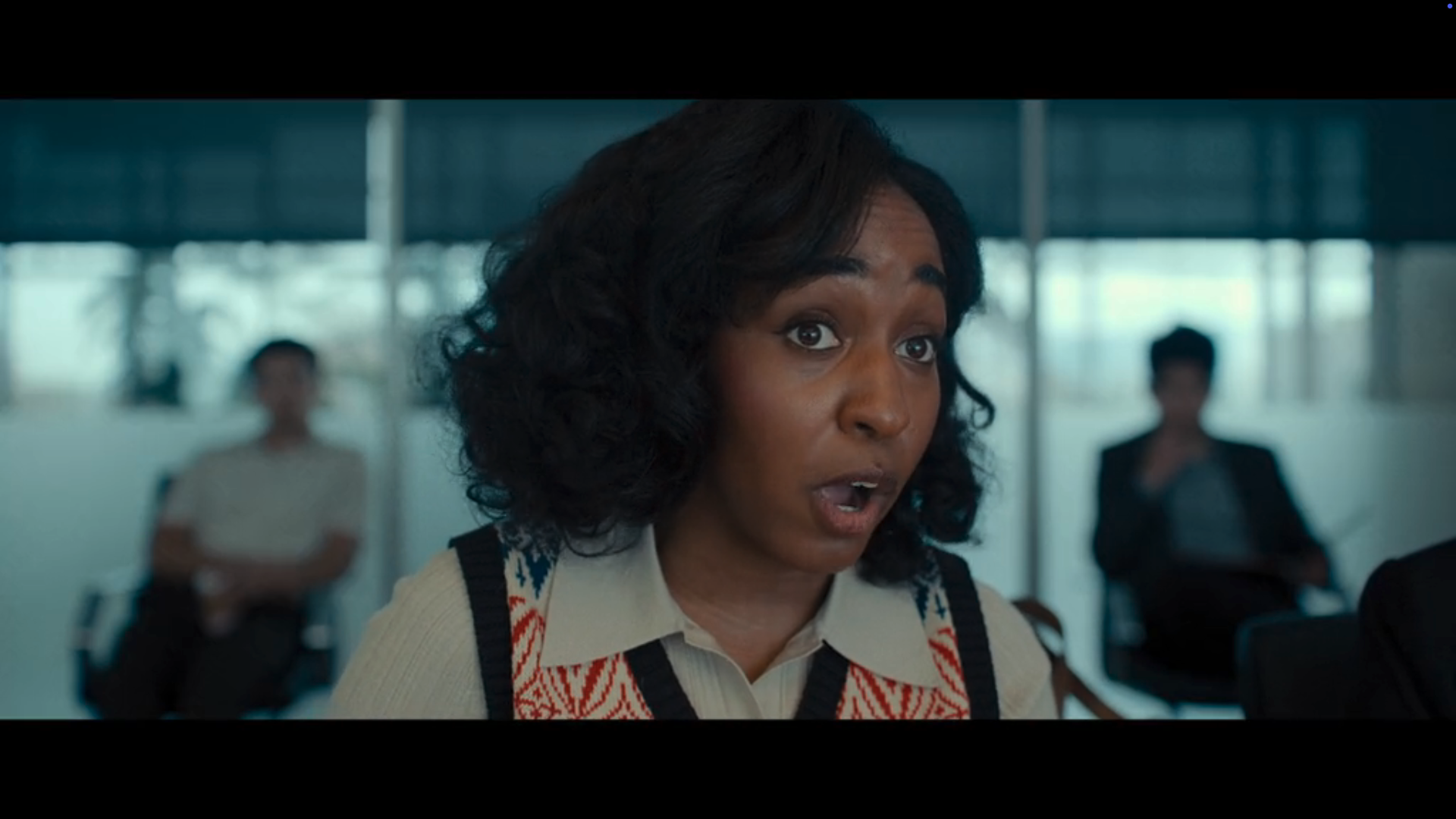
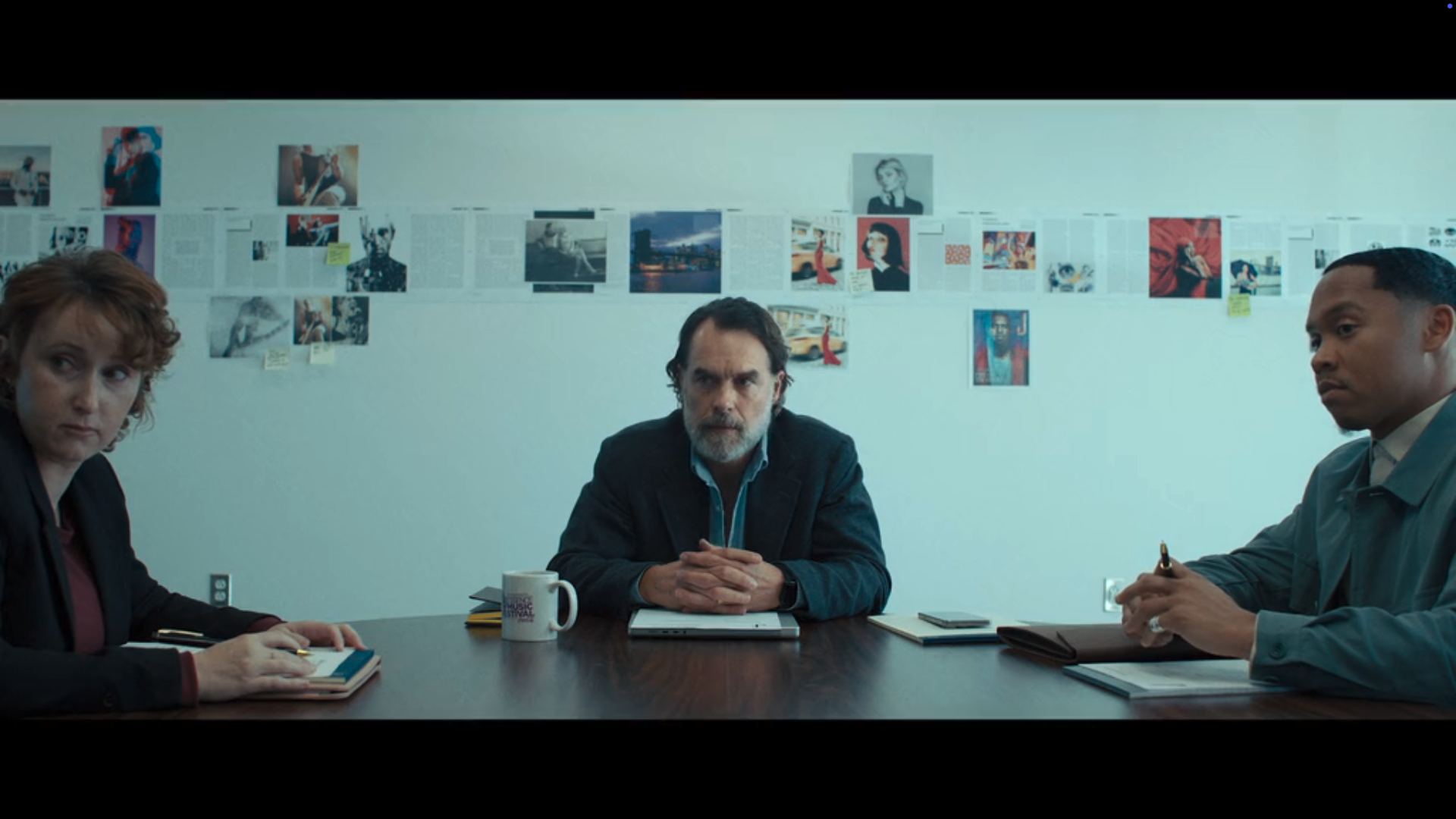
MCU, straight on of Ariel vs. ML (although the table frames Stan's torso as a medium shot), straight on of Stan
Can you take this a step further?
How is Green creating discomfort and unease?
How is he hinting at us that we are here to investigate and report ourselves?
Noticing a later 3 shot in the opening scenes of Opus
The pattern is less direct in a subsequent sequence, but I noticed once again that Stan is center screen, with Ariel and her colleague on either side of him.
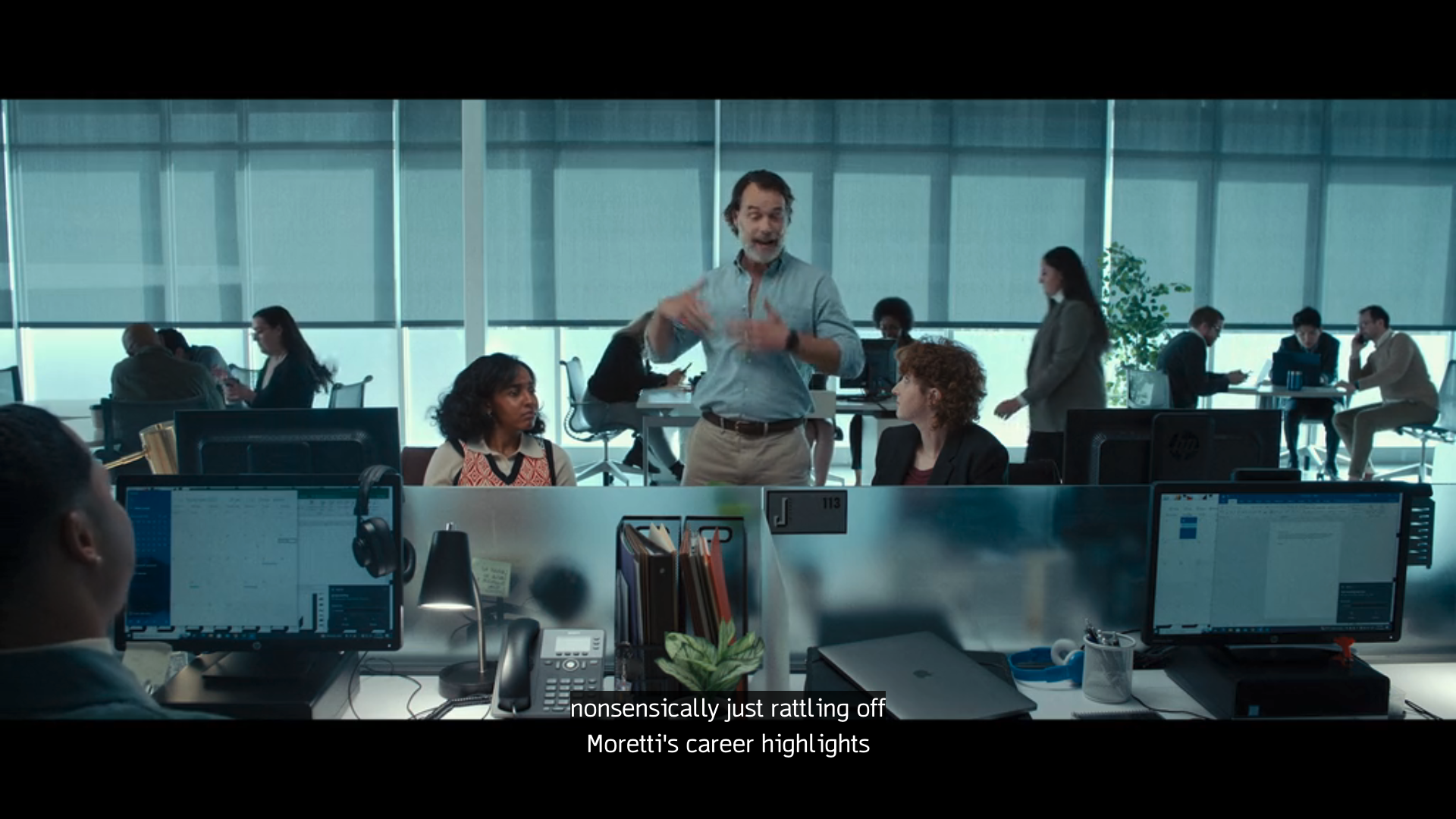
An additional difference would be that this time, all three of them could be considered center frame - so are they all in the same place...? With regards to opinions? With regards to their role in print/traditional media? Something else? If Stan is standing, does this represent their visual hierarchy? Stan is their boss, he is above them. Ariel and her colleague are reporters that work for him, below.
Are the women flanking Stan? Do their ideas pull him?
Or is there something else about the framing, the lighting, and the content of the dialogue itself that's emphasized with the blocking here?
A "3 shot" can also, simply be a balanced shot with regards to composition
There are other moments that frame 3 actors/actresses throughout Opus, but this may not have any symbolic significance (it also could).
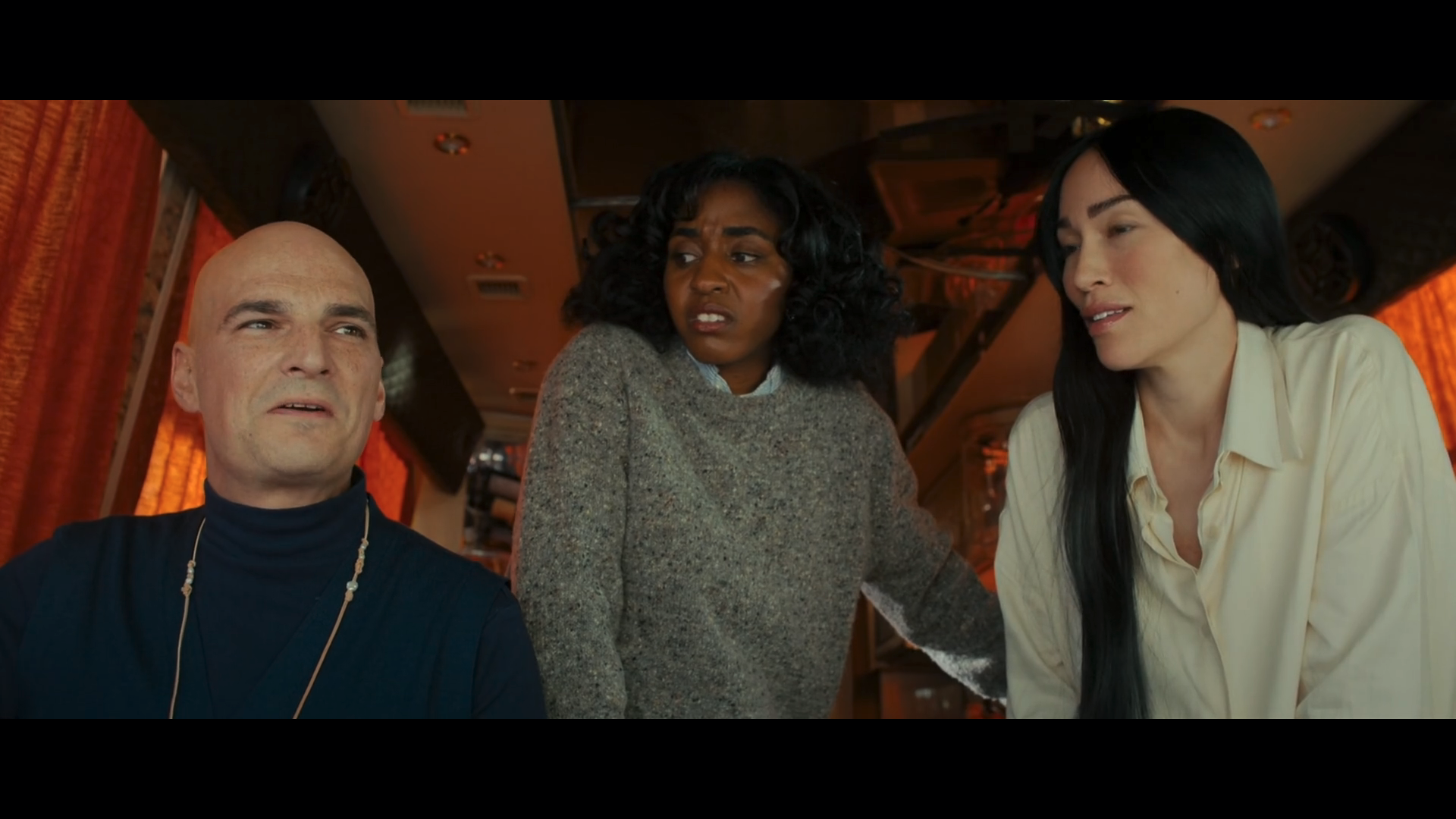
Here we can see the distinct costuming of Jorg, Ariel, and Emily. Jorg and Emily are in the foreground, is it possible that the Levelists and influencers might have something more in common? Something that Ariel might feel caught in the middle of?
Ariel's center framing allows us to focus more on her responses to their actions and behavior. Jorg adds to the mystique of Moretti, and Emily Katz, as an influencer, is someone that's good at building an aesthetic/mystique around whatever she influences about. In this moment, Jorg is sharing details about the fans that hang out in front of the fence at the edge of the Moretti property (compound?), and Ariel's opinion of what Jorg might revere, clearly differs.
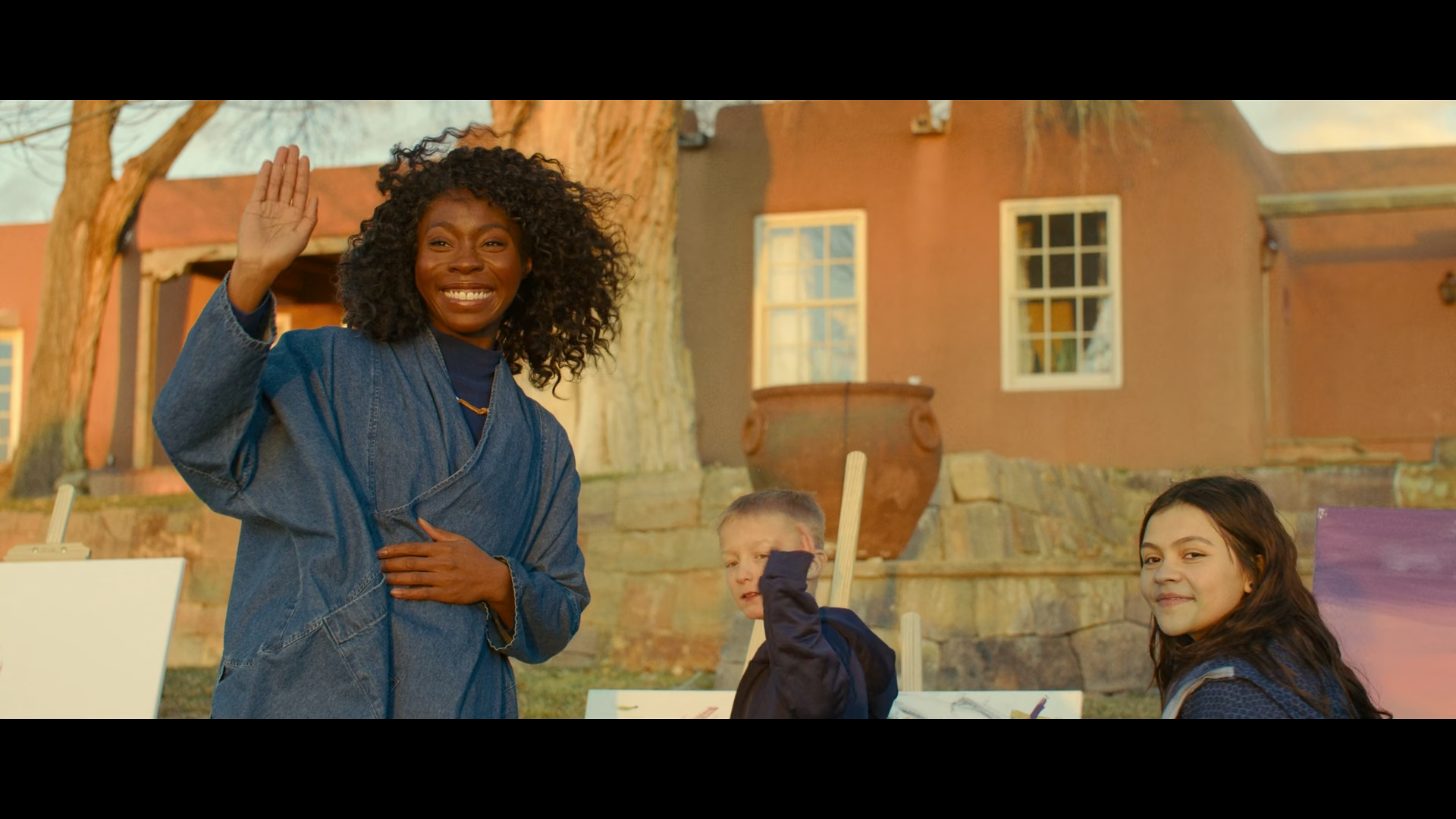
In this moment, Ariel is running around the enclave and this woman waves to her. Upon closer inspection, you'll notice the boy center framed also waving, too. But is the significance here really about the three people in the shot, or do the boy's and the girl's presence help balance out the visual composition of the woman standing to the left of the frame?
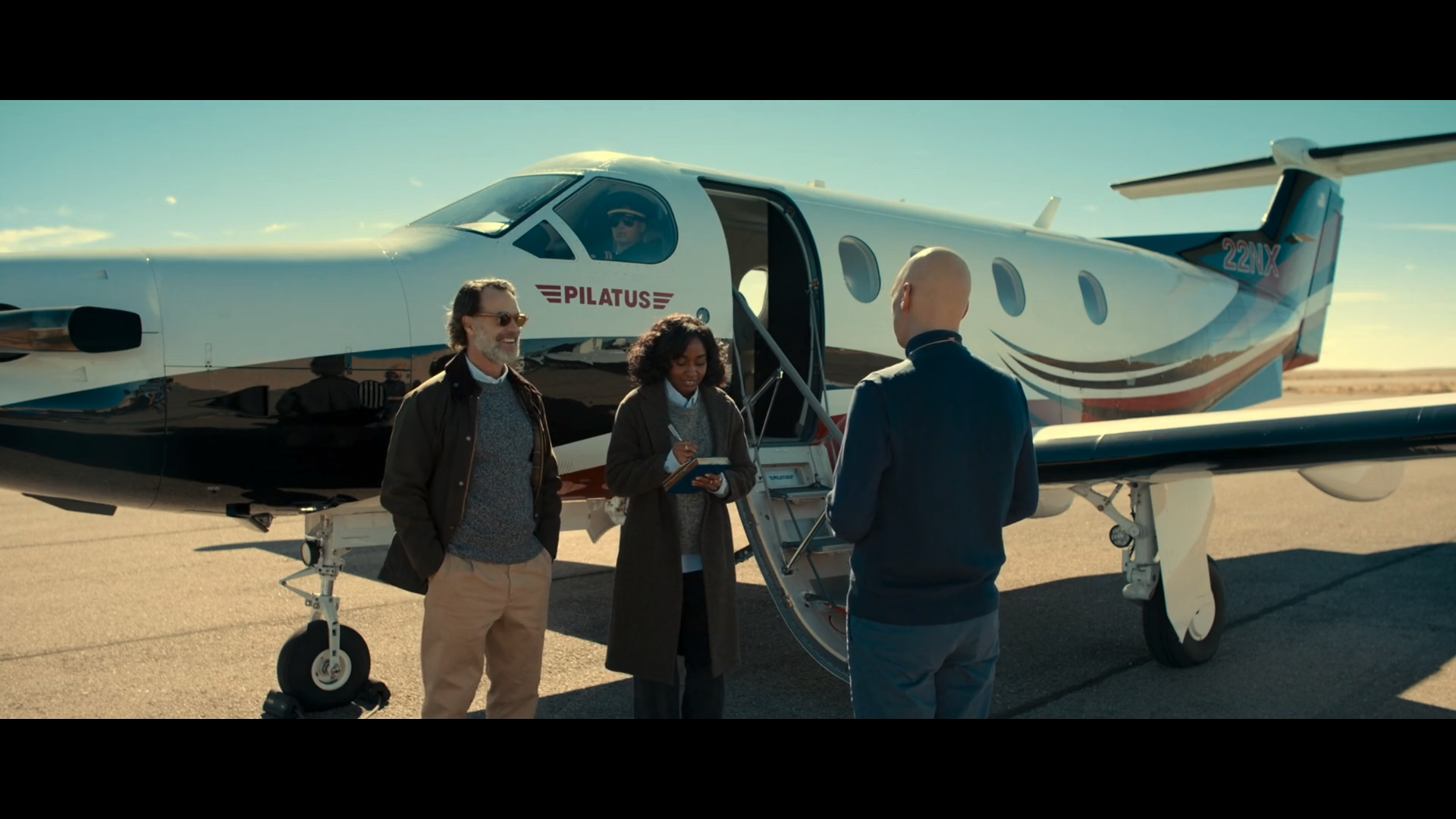
And here, similar to the shot of Stan standing over Ariel and her colleague in an earlier sequence, Jorg, Ariel, and Stan spread across the center of the frame. In this moment, Jorg walks up to Stan and Ariel, and his presence balances out the composition of the image. Before he enters, the image might feel a bit weighted or heavy where Stan and Ariel stand slightly off to the left of center, both in their gray sweaters and olive/military green jackets. Yet, Jorg's presence from this angle, where we're viewing him from behind, feels quite muted. The blue of his attire almost helps him to disappear into the surrounding colors.
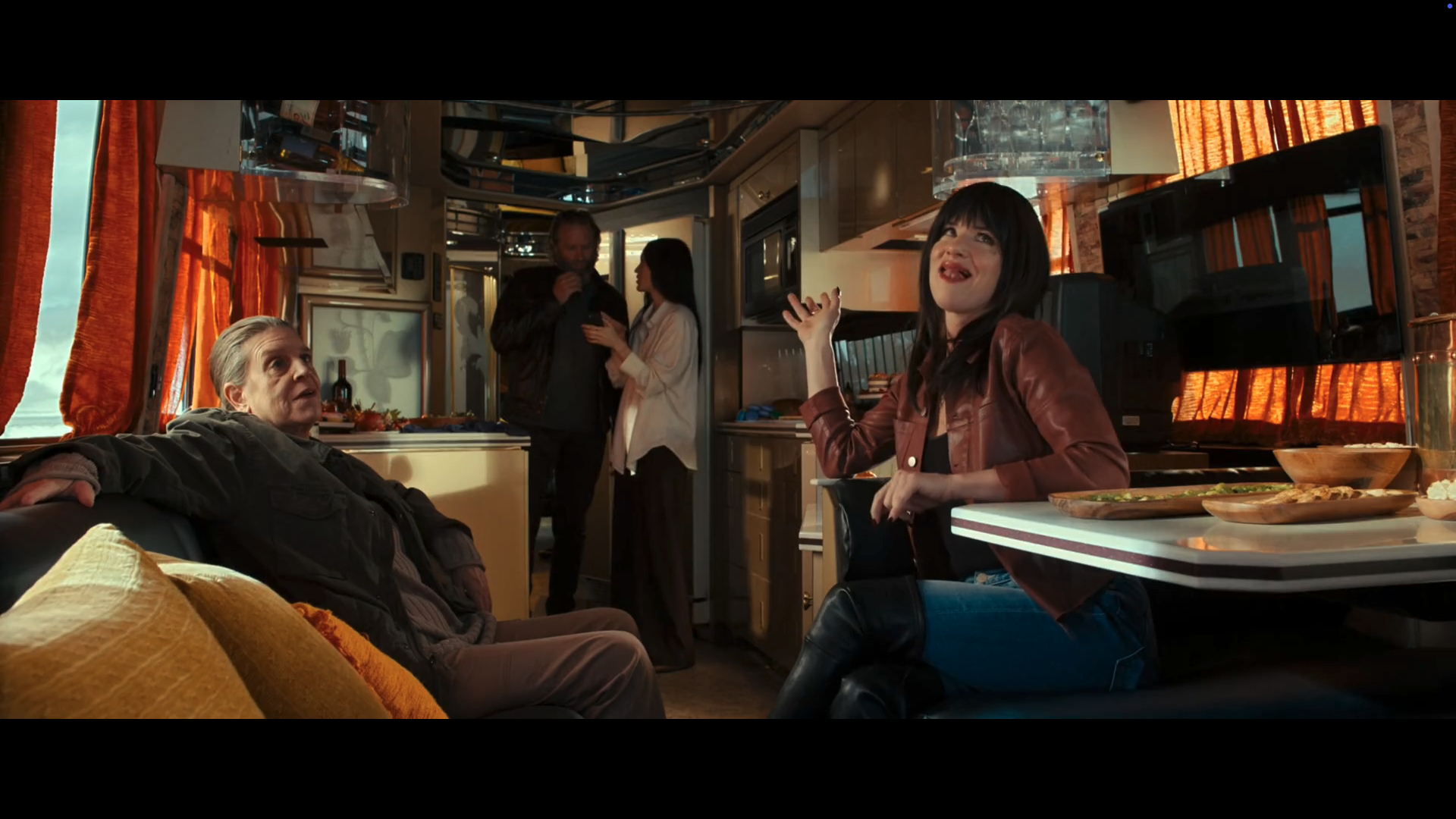
And here's another example of a shot that's balanced in its composition. Bianca takes up the left side of the frame, seated across from Clara, who takes up the right side of the frame. They're both in the mid ground, whereas Bill Lotto and Emily Katz stand together in the center of the frame, split between Bianca and Clara, though they're in the background.
We could analyze the framing, distance, and mise-en-scene here:
Why is Bianca seated by the window?
Why is Clara seated next to a television?
Why are Bill and Emily standing in the background in a hushed conversation?
There does seem to be a significance in framing and mise-en-scene (setting, props) here that we can explore, but the significance isn't necessarily due to the "3 shot" in the way we see it in the opening scene of Ariel and Stan.
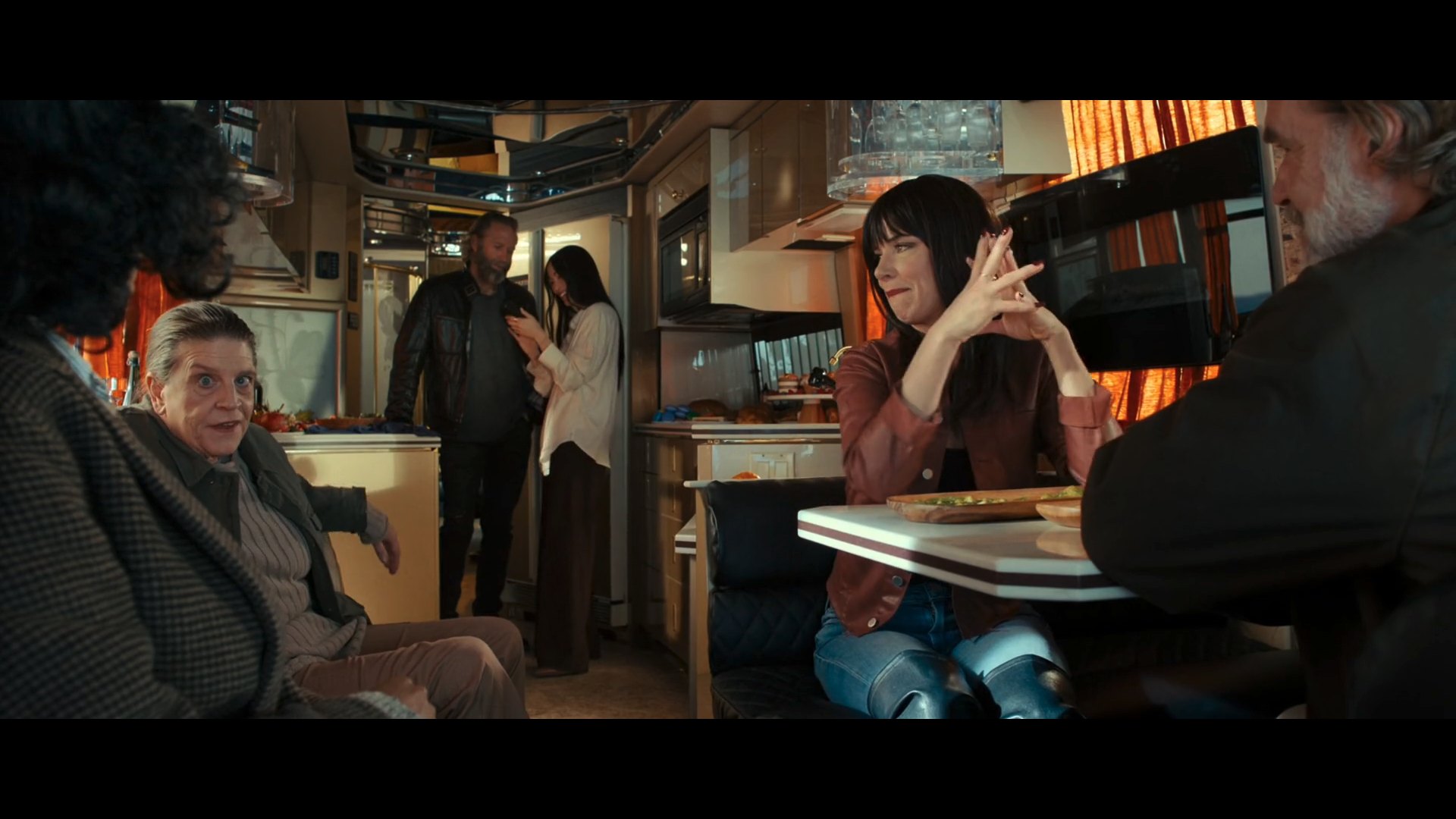
If we move to a moment later, where Ariel and Stan are seated in the foreground and we are looking over their shoulders - we can think about:
Whose perspective is the audience sharing? Why are we looking over Ariel and Stan's shoulders?
Why might Ariel be "on Bianca's side" and Stan "on Clara's side"? What might they have in common either with their media type? Their attitude/opinion about this entire experience? Something else?
If Stan and Ariel are more symbolic of print media, then what does the blocking, framing, and distance here suggest about the relationship between different types of media? If Bianca is a paparazzo, Clara is a TV personality, Lotto is a podcaster, and Katz is an influencer?

